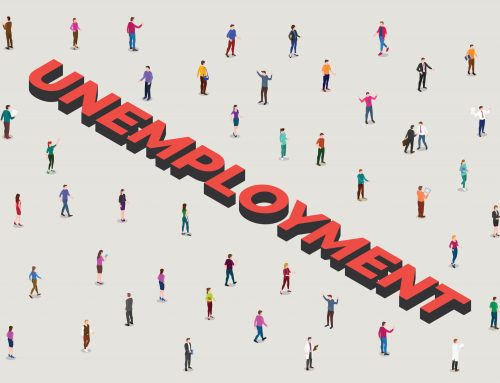May 22, 2024
Business confidence slightly less negative once again
| Jaar | Maand | Business confidence |
|---|---|---|
| 2019 | Jan | 4.0 |
| 2019 | Apr | 2.4 |
| 2019 | Jul | 0.9 |
| 2019 | Oct | -4.6 |
| 2020 | Jan | -1.6 |
| 2020 | Apr | -51.9 |
| 2020 | Jul | -22.8 |
| 2020 | Oct | -15.9 |
| 2021 | Jan | -11.4 |
| 2021 | Apr | 0.0 |
| 2021 | Jul | 11.9 |
| 2021 | Oct | 12.9 |
| 2022 | Jan | -0.6 |
| 2022 | Apr | -9.9 |
| 2022 | Jul | -12.5 |
| 2022 | Oct | -22.2 |
| 2023 | Jan | -13.2 |
| 2023 | Apr | -8.1 |
| 2023 | Jul | -8.3 |
| 2023 | Oct | -10.1 |
| 2024 | Jan | -7.7 |
| 2024 | Apr | -6.0 |
| Source: CBS, EIB, KVK, MKB-Nederland, VNO-NCW | ||
Sentiment remains negative in most sectors
Business confidence in most sectors has improved this quarter, but is still negative overall. Confidence has improved fairly strongly in the car trade and repair sector and in the transportation and storage sector. It rose the most in the mining and quarrying sector, after falling the most in the previous quarter; however, this industry is relatively small and thus has a limited effect on the overall figure. Sentiment is the most positive in the culture, sports and recreation sector. It is the most negative in the construction sector and in agriculture, forestry and fisheries.
| April 2024 | January 2024 | |
|---|---|---|
| Total (excl. financial and utilities companies) | -6.0 | -7.7 |
| Culture, sport and recreation | 2.8 | -2.4 |
| Mining and quarrying | 1.7 | -28.9 |
| Business services | -1.0 | 1.6 |
| Information and communication | -1.2 | 2.3 |
| Transportation and storage | -2.6 | -13.7 |
| Other services | -2.8 | -1.5 |
| Car trade and repair | -3.7 | -21.5 |
| Real estate activities | -4.0 | -8.1 |
| Accommodation and food services | -4.6 | -13.5 |
| Manufacturing | -8.3 | -7.1 |
| Retail trade (excl. cars) | -8.7 | -5.4 |
| Construction | -10.2 | -15.9 |
| Wholesale and commission trade | -10.2 | -8.3 |
| Agriculture, forestry and fisheries | -15.1 | -16.9 |
| Source: CBS, EIB, KVK, MKB-Nederland, VNO-NCW | ||
Labour shortage still the main issue
The labour shortage is still the most frequently cited obstacle for businesses, and was identified by over 36 percent of respondents. For the first time in nearly two years, this share rose slightly compared to the previous quarter. Nevertheless, it is still below the mid-2022 peak, when nearly 48 percent of business owners reported the shortage of labour as an issue. Since then, business owners have increasingly been citing weak demand as an obstacle (nearly 21 percent). The issue of weak demand was mentioned the most frequently in manufacturing, at 27 percent. Entrepreneurs in business services cited staff shortages as an obstacle the most often, at nearly 53 percent. This issue is also affecting nearly half of business owners in the car trade and repair sector and the retail sector.
| Jaar | Maand | Labour shortage (% of businesses) | Weak demand (% of businesses) | Shortage of means of production, materials, space (% of businesses) |
|---|---|---|---|---|
| 2019 | Jan | 27.0 | 9.1 | 5.5 |
| 2019 | Apr | 27.2 | 9.3 | 5.2 |
| 2019 | Jul | 28.3 | 11.0 | 4.2 |
| 2019 | Oct | 28.0 | 11.6 | 4.0 |
| 2020 | Jan | 25.3 | 13.9 | 3.9 |
| 2020 | Apr | 11.0 | 22.9 | 5.4 |
| 2020 | Jul | 11.2 | 28.6 | 5.1 |
| 2020 | Oct | 13.0 | 26.2 | 4.5 |
| 2021 | Jan | 11.9 | 22.6 | 4.8 |
| 2021 | Apr | 15.2 | 19.5 | 9.0 |
| 2021 | Jul | 27.9 | 14.7 | 15.4 |
| 2021 | Oct | 37.3 | 11.9 | 16.9 |
| 2022 | Jan | 34.2 | 11.5 | 16.8 |
| 2022 | Apr | 42.3 | 10.3 | 23.8 |
| 2022 | Jul | 47.7 | 11.2 | 21.8 |
| 2022 | Oct | 46.6 | 13.7 | 20.6 |
| 2023 | Jan | 42.5 | 14.5 | 15.6 |
| 2023 | Apr | 40.8 | 16.0 | 13.3 |
| 2023 | Jul | 40.6 | 16.4 | 11.7 |
| 2023 | Oct | 39.7 | 19.7 | 9.0 |
| 2024 | Jan | 35.3 | 20.4 | 7.0 |
| 2024 | Apr | 36.5 | 20.8 | 7.5 |
| Source: CBS, EIB, KVK, MKB-Nederland, VNO-NCW | ||||
Improvements in working conditions main response to staff shortage
Nearly 70 percent of business owners report staff shortages. Businesses are responding to this in various ways. Nearly 34 percent say they are improving working conditions (such as giving staff a salary increase). This is the most frequently mentioned approach across almost all sectors. About a quarter of business owners are introducing more automation in response to staff shortages; in manufacturing, almost a third are taking this approach. Just over 12 percent say they are bringing in more labour from abroad. Enterprises in the agriculture, forestry and fisheries sector indicate this the most often, in relative terms. Nearly 17 percent are limiting the goods and services supplied according to the number of staff available. Business owners in the car trade and repair sector and the accommodation and food services sector are particularly likely to mention this solution.
Source: Statistics Netherlands
Legal Notice: The information in this article is intended for information purposes only. It is not intended for professional information purposes specific to a person or an institution. Every institution has different requirements because of its own circumstances even though they bear a resemblance to each other. Consequently, it is your interest to consult on an expert before taking a decision based on information stated in this article and putting into practice. Neither Karen Audit nor related person or institutions are not responsible for any damages or losses that might occur in consequence of the use of the information in this article by private or formal, real or legal person and institutions.






